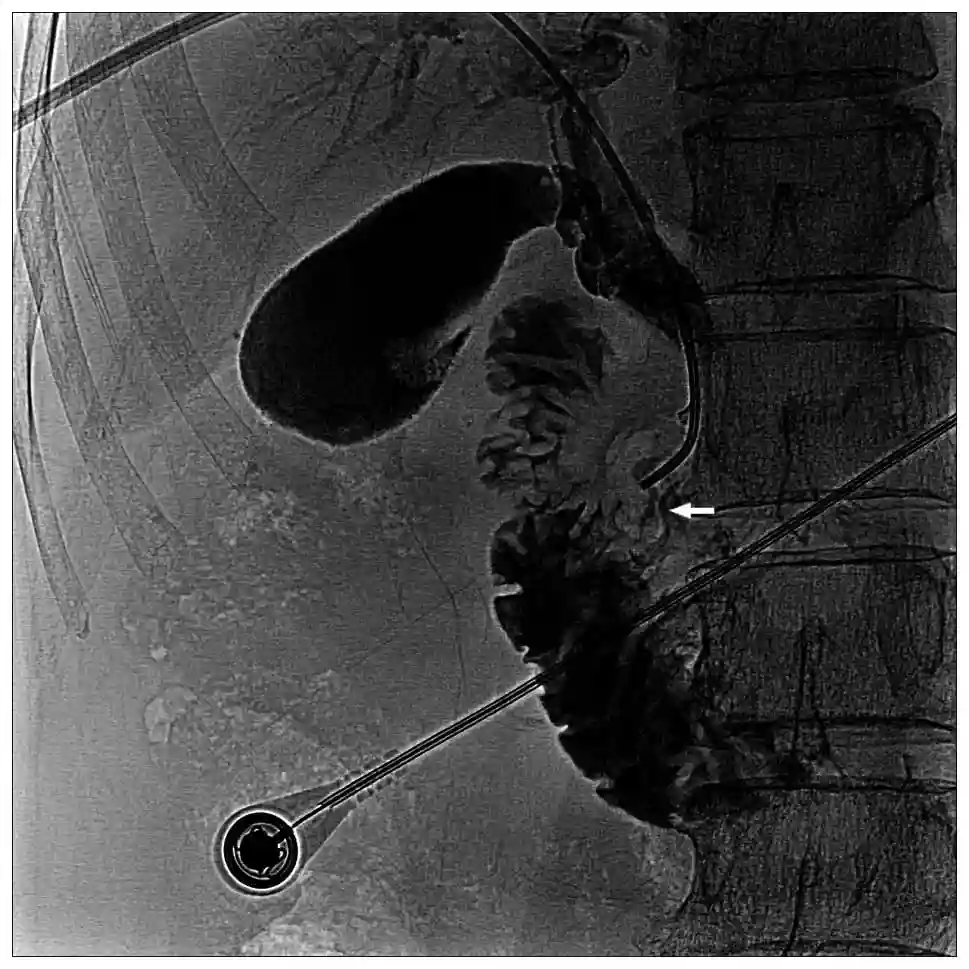Transhepatic Stenting
A Comprehensive Guide to Indications, Procedure, and Recovery

What is Transhepatic Stenting?
Transhepatic Stenting is a minimally invasive procedure used to open blocked or narrowed bile ducts by placing a stent to allow bile to flow freely from the liver to the intestines. It is often employed in cases of bile duct obstructions caused by strictures, tumors, or complications of liver diseases.
Key Features of Transhepatic Stenting
- Minimally invasive, performed under imaging guidance
- Effective for relieving jaundice and associated symptoms
- Uses fluoroscopy or ultrasound for precise stent placement
- Can be performed as a palliative or curative procedure
When is Transhepatic Stenting Needed?
Transhepatic stenting is indicated in patients with bile duct obstructions due to:
- Malignant Causes: Tumors such as cholangiocarcinoma or pancreatic cancer
- Benign Strictures: Scarring or narrowing of the bile ducts
- Gallstone Disease: Stones causing biliary blockage
- Liver Transplant Complications: Post-surgical strictures
- Primary Sclerosing Cholangitis: Chronic inflammation leading to bile duct narrowing
How is Transhepatic Stenting Performed?
The procedure is typically performed by an interventional radiologist:
- Imaging Guidance: Ultrasound or fluoroscopy is used to locate the bile duct obstruction.
- Access: A needle is inserted through the skin into the liver to access the bile ducts.
- Stent Placement: A stent is guided through the obstruction to restore bile flow.
- Confirmation: Imaging is used to confirm proper stent positioning and bile flow restoration.
Benefits of Transhepatic Stenting
The procedure provides significant advantages for patients, including:
- Relief from jaundice and associated symptoms like itching and fatigue
- Improved liver function and bile drainage
- Minimally invasive approach with shorter recovery times
- Allows for further treatments, such as chemotherapy, in malignant cases
Risks and Potential Complications
While generally safe, transhepatic stenting carries some risks:
- Bleeding or bruising at the insertion site
- Infection of the bile ducts or liver (cholangitis)
- Migration or blockage of the stent
- Rarely, injury to surrounding organs or tissues
Patients are monitored closely after the procedure to manage any potential complications.
What to Expect After the Procedure
Recovery from transhepatic stenting is typically quick, with most patients experiencing:
- Improved bile drainage within hours to days
- Minimal pain or discomfort at the access site
- Follow-up imaging to monitor stent function and position
- Occasional stent replacements depending on the type of stent used